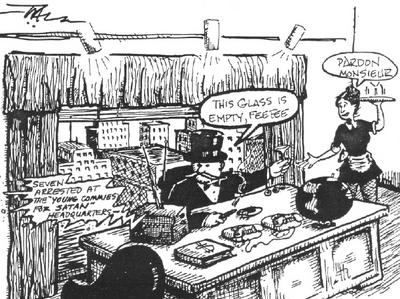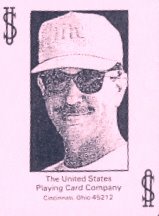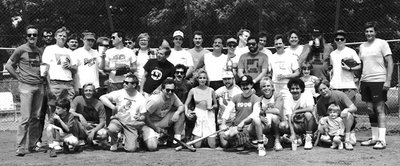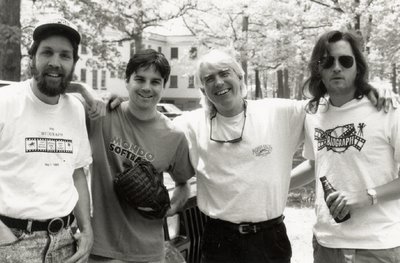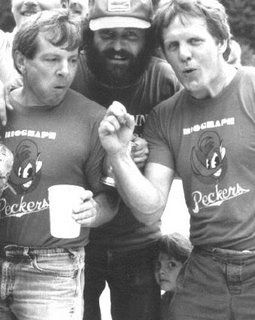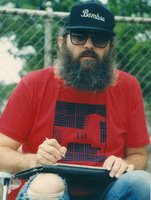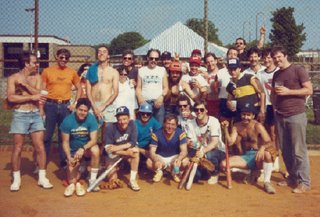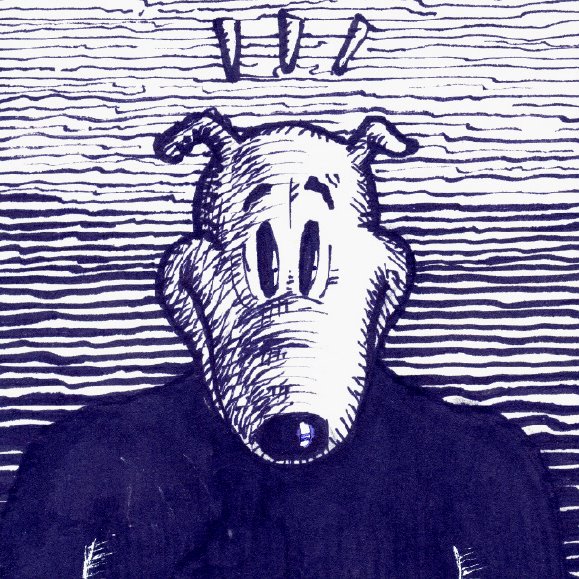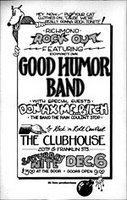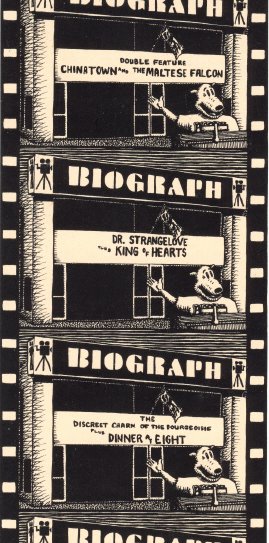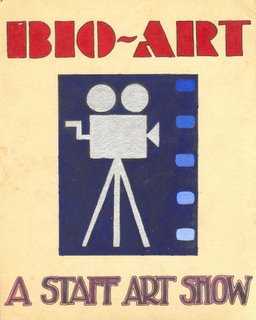On Saturday, May 6, 2006 another Kentucky Derby Day softball reunion was held. Anyone who ever played on the now defunct team was welcome, plus their families, friends, etc.
Chiefly, the annual get-togethers were set in motion by the initiative of the original Swordfish team’s third baseman, Ernie Brooks, who had left Richmond to resume his graduate studies at Virginia Tech. Brooks corralled enough former players (Swordfish), who had also left the team, to challenge what was then the current Biograph team (then called the Naturals).
Serendipitously, that first reunion/old timers game was played on the first Saturday of May, earlier in the afternoon in which the 1980 Kentucky Derby would be run. (We went to The Track to watch the horse race.) Thus, a tradition was set and it’s been Derby Day ever since. At this time the Biograph Theatre’s softball team was one of the cars, maybe the clown car, attached to the runaway train known as the Fan District Softball League (1975-94).
At this year's reunion a few innings of softball were played in splendid weather without anyone hobbling off the field, or worse -- being carried off. A fine picnic spread was laid out and consumed. Cold beer flowed as the same stories were stretched, again. The horse race was watched on a little battery-powered TV.
Several of the guys at this year’s gathering were teammates of mine in 1976, when I was the manager of the Biograph, a repertory cinema that was located at 814 West Grace Street. It was the first summer of Biograph softball. We called ourselves the Swordfish, after a joke in a Marx Brothers movie. That year we played a schedule that was not set; we challenged other teams, which played in organized leagues (mostly Fan League teams), to play us for a keg of beer.
The Biograph Swordfish won 15 games (that were scheduled and umpired) of the 17 we played that initial season. In spite of having few experienced softball players on a roster, which included two French guys (friends of one of the cinema’s cashiers) -- they had never seen a softball, or baseball -- we probably won half of them by coming from behind in late innings.
Typically, our opponents saw themselves as more experienced and athletically superior, which only made it more fun when they bumbled their way into handing us the victory.
It was uncanny. Every time, those supposedly better teams seemed to be willing to overplay their hands. Now, having played and observed a lot of organized softball, I know that first Swordfish squad was absolutely charmed. Moreover, it was the loosest and luckiest team I’ve ever been associated with, bar none.
The Swordfish's two losses were: the championship game of one of the two tournaments we entered, and the other was played inside the walls of the old state penitentiary.
Located at Belvidere and Spring Streets, the fortress prison loomed over the rocky falls of the James River for nearly 200 years (it was demolished in the early-1990s). As it happened the guy in charge of recreation at the pen frequented J. W. Rayle, a popular bar of the era, located at Pine and Cary. In that bar, during a conversation, he asked me if the Biograph team -- I played outfield and served as the coach -- would consider taking on the prison’s team on a Saturday afternoon.
As it turned out the first date he set up was cancelled, due to something about a small riot.
OK.
A couple of weeks later the Swordfish entered the Big House. To get into the prison yard we had to go through a process, which included a cursory search. As I recall, we had been told to bring nothing in our pockets. Thus, we had our softball equipment and that was it.
As we worked our way through the ancient passageways, sets of bars were unlocked and then locked behind us. Each of us got a stamp on our hands that could only be seen under a special light. Someone asked what would happen if the ink got wiped off, inadvertently, during the game. He was told that was not a good idea.
OK.
The game itself was like all softball games, in ways, and rather unusual in others. The fence in leftfield was the same high brick wall that ran along Belvidere Street. It was only about 225 to 240 feet from home plate. Yet, because of its height, maybe 30 feet, a lot of hard-hit balls caromed off of it. What would have been a routine fly ball on most fields was a home run there. It was a red brick version of Boston’s Green Monster.
The prison team, known as the Raiders, was quite good at launching softballs over that towering brick wall. They seemed to have an unlimited budget for softballs, too. Under the supervision of watchful guards hundreds of other prisoners, seated in stands, cheered for the home team to vanquish the visiting Swordfish.
During a conversation with a couple of my teammates behind the backstop, I referred to the home team as “the prisoners.” Our opponents’ coach stepped toward me. He, like his teammates, had on a typical softball uniform of that era -- it was a maroon and gray polyester affair, with “Raiders” printed across the chest and a number on the back.
In contrast, we just had identical blue hats with a “B” on them. About half of us wore one of two different Biograph T-shirts models.
“Call us the Raiders,” he advised, sternly, as he pointed to a mural on the prison wall that said “Home of the Raiders.”
I realized I’d made a faux pas, right away.
“While we are on the field, we’re not The Prisoners,” he said with conviction, “we’re the Raiders.”
“Raiders,” I said. “Right.”
“All our games are home games,” he deadpanned.
We all laughed, grateful the tension had been broken. He thanked us for being there, for agreeing to play them.
The Raiders won, in a high-scoring affair. Afterward, I was glad we’d met the Raiders. And, I was even more glad to leave that place.
Now, I’m so glad that prison is no longer there. Located in the middle of Richmond, it was a nightmare in so many ways.
It was all part of a sepia-toned softball season so long ago it seems like a dream now. The Biograph teams that followed never saw such raw success, again. Each year that passes, the original Swordfish that show up -- that can show up -- are more glad than ever to see one another on Derby Day.
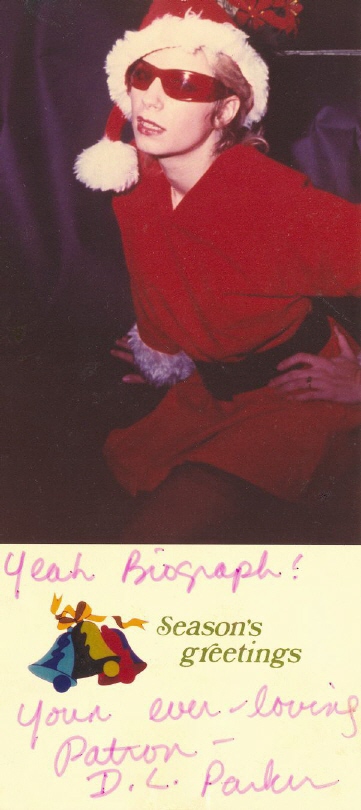 Without our steady patrons the Biograph would not have happened for long. Amazingly, it lasted 15 years in a town without pity, movie-wise.
Without our steady patrons the Biograph would not have happened for long. Amazingly, it lasted 15 years in a town without pity, movie-wise.
